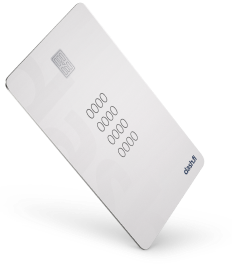Managing money effectively is crucial for any business. As a business owner, you need to quickly and easily determine your company’s available funds, where your money comes from, and where your money is going.
Rho and dash.fi are online finance platforms built with ecommerce companies in mind. They aim to help you track and manage your money.
If you’re looking for an easy way to track your company’s finances, you should look into both businesses.
What is Rho?
Rho describes itself as an all-in-one platform for everything your company’s finance team needs. It provides various services in one platform to give companies greater safety, control, and efficiency with their finances.
Corporate Cards
Rho offers corporate credit cards with flexible payment terms and no personal guarantee required. It lets business owners instantly issue virtual cards for different departments or employees and offers live tracking and spending reports.
Rho’s cards offer up to 1.75% cash back and come with no foreign transaction fees, letting your company use them anywhere you do business. You can also set up spending limits and controls to help protect against fraud.
Accounts Payable Automation
It’s essential for businesses to pay their bills promptly and to keep track of those expenses. Rho helps with that by offering an AP automation service with no ACH, wire, or check fees.
Rho gives you a dedicated email inbox where you route all your company invoices. When Rho receives an invoice, it automatically enters it into the accounts payable system. Approving payment for the invoices is easy, and you can set up customized, multi-level approval processes for bills.
Expenses
Tracking and reimbursing employee expenses can be a hassle, but Rho helps to simplify the process by letting you set up customized rules and automate expense approvals.
You start by setting rules, such as spending limits and whether a receipt is required. These rules integrate with your corporate cards so employees can get an immediate notification via text or email about what they need to do to complete expenses. They can upload receipts directly from their phone.
For those without a corporate Rho card, submitting reimbursements for out-of-pocket costs is also simple with the app.
Banking
Every business needs a checking account to keep its cash safe and to serve as a clearinghouse for the company’s incoming and outgoing funds.
Rho offers a simple business checking account with up to $250,000 in FDIC insurance and zero fees for wires, ACH transfers, or checks. Forex payments come with a 0.6% fee.
For companies with more cash, Rho provides treasury management accounts with up to $75 million in FDIC coverage. These accounts offer high-interest rates and next-day liquidity.
Accounting Integrations
Accounting can be a hassle, but Rho tries to simplify the process by integrating with popular bookkeeping tools like Quickbooks Online and NetSuite to eliminate manual data entry and automate every process possible.
The company claims it can cut the time it takes to close your company’s books by as much as 80% while also improving accuracy.
Pros & Cons of Rho
Before you sign up for Rho, it’s important to consider the pros and cons of the service.
Pros
Earn up to 1.75% cash back
Low fees
Integrates with popular business tools
High FDIC insurance limits
Cons
No access to ATMs
Only available to businesses with $1 million in revenue or equity capital raised
Rho vs. Dash.fi
Both Rho and dash.fi operate in similar niches—they aim to help ecommerce and other companies manage their finances more effectively. Before signing up for one, you should see how they compare and which better fits your needs.
Pricing
Businesses are always looking to keep their costs low, since low costs and high revenues are the keys to strong profitability.
Rho is appealing because it keeps costs very low. There are no platform fees, and the platform has fee-free ACH transfers, wire transfers, and the like. By comparison, dash.fi charges $695 per year.
However, dash.fi’s currency conversion fee is just 0.2% compared to Rho’s 0.6% for forex payments, making dash.fi more appealing if you do a lot of overseas spending.
Rewards
Both dash.fi and Rho offer rewards when you use their corporate cards, but how those rewards work is quite different.
Dash.fi focuses on advertising spending, offering 3% cash back on your first two months of spending. You can also negotiate a custom reward agreement with dash.fi to let you earn in other ways.
Rho offers up to 1.75% cash back on all purchases, but how much you earn depends on how long you take to pay off your card’s balance. You’ll earn:
1.75% with a 1-day term
1.5% with a 30-day term
0.75% with a 45-day term
0% with a 60-day term
Virtual Cards
Rho and dash.fi both give customers the option to make an unlimited number of virtual cards. You can use these cards to manage and track different employee or department spending.
Both companies offer tools to set spending limits or control employees' use of the cards.
Accounting Integrations
Rho and dash.fi bill themselves as tools to make managing your company’s money easier. Both platforms integrate with Quickbooks and NetSuite to help sync transactions and make bookkeeping easier. However, dash.fi’s platform directly integrates with several other popular accounting tools, including some that cater to ad agencies.
Requirements
Neither dash.fi nor Rho requires a credit check or personal guarantee to sign up and get a card. However, Rho has some strict limits on which businesses are eligible to use the platform and get a card.
To qualify with Rho, your company must have more than $1 million in annual revenue or have raised $1 million in equity capital.
The Final Word
Dash.fi and Rho may be similar services, but they have some key differences. Rho tends to focus more on venture-funded companies with lots of revenue or capital, while dash.fi targets ecommerce businesses with heavy ad spend.
Both offer valuable services and tools, so choose the company that matches your business’s situation.
